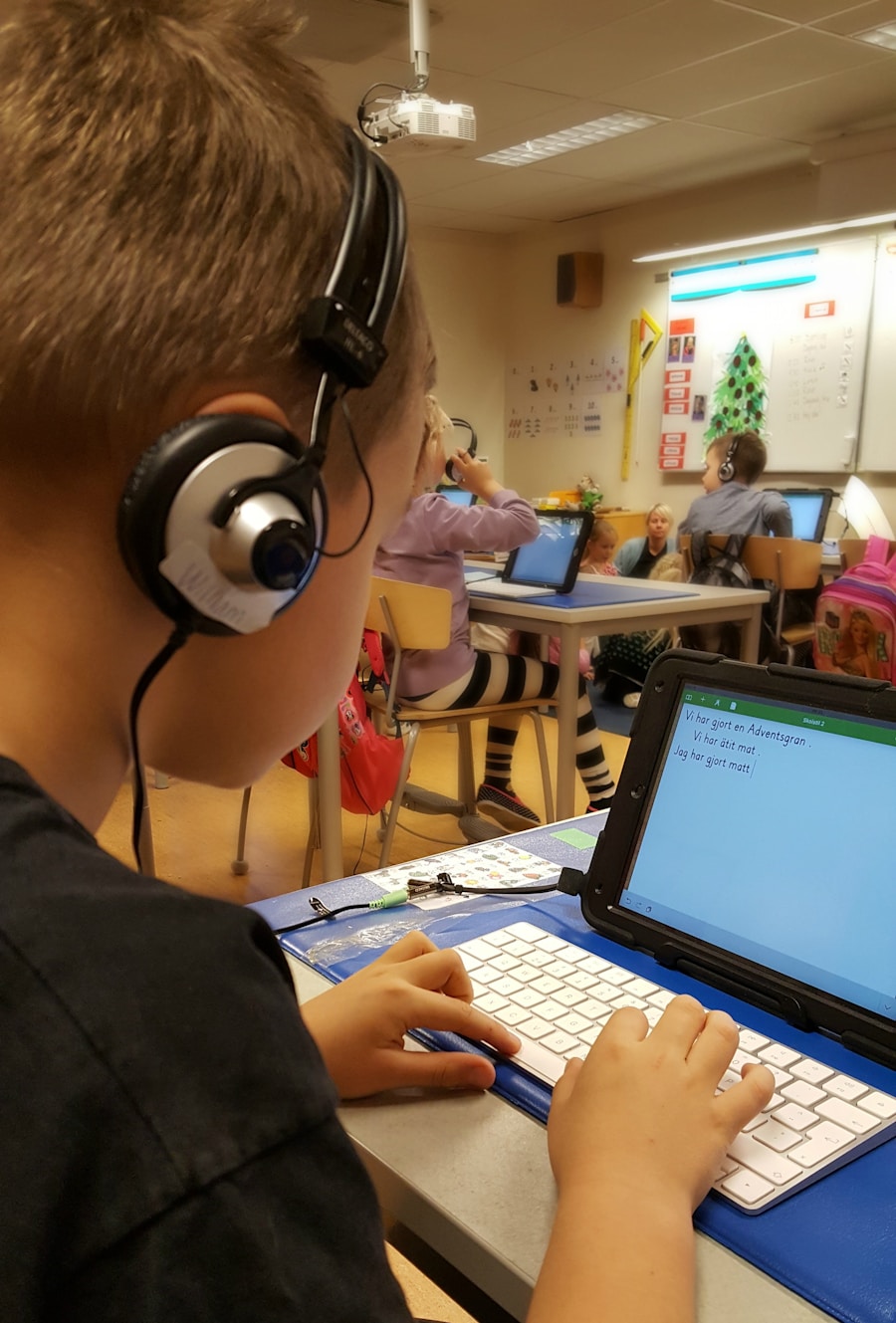
A robust vocabulary is a cornerstone of effective communication, serving as the foundation upon which language skills are built. The ability to articulate thoughts clearly and precisely hinges on one’s command of words. A rich vocabulary not only enhances verbal and written expression but also fosters comprehension.
When individuals possess a diverse lexicon, they can engage in more nuanced discussions, convey complex ideas, and understand subtleties in meaning that might elude those with a limited vocabulary.
Moreover, vocabulary plays a pivotal role in cognitive development.
Research indicates that a strong vocabulary is linked to improved reading comprehension and critical thinking skills. When learners encounter new words, they are not merely memorizing definitions; they are also expanding their cognitive frameworks. Each new word learned can open doors to new concepts and ideas, allowing individuals to think more creatively and analytically.
This cognitive expansion is essential not only for academic success but also for personal growth and lifelong learning. In essence, investing time and effort into vocabulary development is an investment in one’s intellectual capacity and communicative prowess.
Key Takeaways
- A strong vocabulary is essential for effective communication and language proficiency.
- Online tools and apps offer convenient and interactive ways to expand vocabulary.
- Vocabulary games and quizzes make learning fun and engaging.
- Language learning platforms provide structured and comprehensive vocabulary expansion.
- Social media and language exchange platforms offer opportunities for real-life language practice and vocabulary building.
- Audio and video content provide immersive experiences for enhancing vocabulary.
- Spaced repetition techniques help in long-term retention of new vocabulary.
- Technology can be used to track progress and set goals for vocabulary improvement.
Utilizing Online Tools and Apps for Vocabulary Building
In the digital age, a plethora of online tools and applications are available to assist individuals in enhancing their vocabulary. These resources cater to various learning styles and preferences, making vocabulary acquisition more accessible than ever before. For instance, platforms like Quizlet allow users to create custom flashcards that can be tailored to specific vocabulary lists or subjects.
This interactive approach not only aids in memorization but also encourages active engagement with the material. Users can test themselves through various modes, such as matching games or multiple-choice quizzes, which can reinforce learning through repetition and varied contexts. Another noteworthy tool is Anki, which employs spaced repetition algorithms to optimize the learning process.
By presenting words at strategically timed intervals, Anki helps users retain vocabulary over the long term rather than cramming information in a short period. This method aligns with cognitive science principles that suggest spaced learning enhances memory retention. Additionally, apps like Memrise incorporate gamification elements, making the process of learning new words enjoyable and motivating.
Users can earn points and compete with friends, turning vocabulary building into a fun and engaging activity rather than a chore.
Incorporating Vocabulary Games and Quizzes

Games and quizzes serve as effective methods for reinforcing vocabulary knowledge while providing an enjoyable learning experience. Engaging in word games such as Scrabble or Boggle not only challenges players to think critically about word formation but also exposes them to new vocabulary in a playful context. These games encourage players to explore different combinations of letters and words, fostering creativity and strategic thinking.
Furthermore, many online platforms offer interactive vocabulary quizzes that adapt to the user’s skill level, ensuring that learners are consistently challenged without becoming overwhelmed. In addition to traditional games, modern technology has introduced innovative formats for vocabulary practice. For example, mobile applications like Wordament combine elements of puzzle-solving with vocabulary building, allowing users to compete against others in real-time while discovering new words.
These interactive experiences can significantly enhance retention by associating words with enjoyable activities. Moreover, educators often utilize quiz-based platforms like Kahoot! to create competitive environments in classrooms, where students can test their vocabulary knowledge against peers.
This social aspect of learning not only motivates students but also fosters collaboration and discussion around language use.
Using Language Learning Platforms for Vocabulary Expansion
| Language Learning Platform | Number of Vocabulary Words | Number of Languages Supported | Active Users |
|---|---|---|---|
| Duolingo | Over 3000 | 37 | Over 300 million |
| Babbel | Over 6000 | 14 | Over 10 million |
| Rosetta Stone | Over 6000 | 24 | Over 12,000 organizations |
Language learning platforms have revolutionized the way individuals approach vocabulary acquisition. Websites such as Duolingo and Babbel offer structured courses that systematically introduce new words within contextually relevant scenarios. These platforms often employ immersive techniques, integrating vocabulary lessons with grammar exercises and cultural insights.
By situating new words within real-life contexts, learners can better understand their usage and nuances, which enhances retention and application. Additionally, many language learning platforms incorporate multimedia elements such as audio recordings and visual aids to reinforce vocabulary learning. For instance, Rosetta Stone emphasizes auditory learning by immersing users in the target language from the outset, encouraging them to associate sounds with meanings without relying on translations.
This method not only aids in pronunciation but also helps learners internalize vocabulary more naturally. Furthermore, some platforms offer community features where learners can interact with native speakers or fellow learners, providing opportunities for practical application of newly acquired vocabulary in conversational settings.
Leveraging Social Media and Language Exchange Platforms
Social media has emerged as a powerful tool for language learners seeking to expand their vocabulary through authentic interactions. Platforms like Twitter, Instagram, and TikTok allow users to follow accounts dedicated to language learning, where they can encounter new words in context through posts, videos, and discussions. Engaging with content creators who share tips on vocabulary usage or cultural insights can provide learners with practical examples of how words are used in everyday life.
Language exchange platforms such as Tandem or HelloTalk further enhance this experience by connecting learners with native speakers around the world. These platforms facilitate real-time conversations through text, voice messages, or video calls, allowing users to practice their vocabulary in authentic contexts. By conversing with native speakers, learners can receive immediate feedback on their word choices and pronunciation while also gaining insights into colloquial expressions and idiomatic phrases that may not be covered in traditional learning materials.
This immersive approach not only solidifies vocabulary knowledge but also builds confidence in using the language in real-world situations.
Engaging with Audio and Video Content for Vocabulary Enhancement

Audio and video content provide rich resources for vocabulary enhancement by exposing learners to diverse linguistic contexts and pronunciations. Podcasts have gained immense popularity as a medium for language learning; they offer listeners the opportunity to hear native speakers discuss various topics while simultaneously encountering new vocabulary in context. For instance, language-specific podcasts often feature discussions on culture, current events, or literature, allowing learners to absorb vocabulary related to specific themes while improving their listening skills.
Similarly, platforms like YouTube host countless channels dedicated to language education where instructors break down complex concepts and introduce new words through engaging visuals and examples. Watching videos that incorporate subtitles can further aid comprehension by allowing learners to see the written form of words while hearing them pronounced correctly. This dual exposure reinforces memory retention and helps learners grasp nuances in pronunciation and intonation that are crucial for effective communication.
Implementing Spaced Repetition Techniques for Long-Term Retention
Spaced repetition is a scientifically backed technique that optimizes the process of memorizing vocabulary by strategically timing reviews of learned material. The underlying principle is based on the spacing effect, which suggests that information is more easily retained when it is reviewed at increasing intervals over time rather than crammed into a single study session.
Incorporating spaced repetition into daily study routines can significantly enhance long-term retention of vocabulary. For example, learners might dedicate specific times each week to review previously learned words while introducing new ones simultaneously. This approach not only reinforces existing knowledge but also prevents the forgetting curve from taking effect—where information fades from memory over time without reinforcement.
By consistently revisiting vocabulary at optimal intervals, learners can build a solid foundation that supports their ongoing language development.
Tracking Progress and Setting Goals with Technology
In an age where technology permeates every aspect of life, tracking progress and setting goals for vocabulary acquisition has become more streamlined than ever before. Many language learning apps come equipped with built-in analytics that allow users to monitor their progress over time. For instance, Duolingo provides users with detailed statistics on their daily practice streaks, words learned, and overall proficiency levels.
This data-driven approach not only motivates learners by showcasing their achievements but also helps them identify areas that require further attention. Setting specific goals is another crucial aspect of effective vocabulary building. Technology facilitates this process by enabling users to create personalized study plans tailored to their individual needs and timelines.
For example, learners might set a goal to master 50 new words within a month or aim to use specific vocabulary in conversation at least three times per week. By breaking down larger objectives into manageable tasks and utilizing tracking features within apps or spreadsheets, individuals can maintain focus on their language learning journey while celebrating milestones along the way. This structured approach fosters accountability and encourages consistent engagement with vocabulary development efforts.
If you are looking to expand your English vocabulary, you may want to check out the Academic Word List (AWL). This list contains essential words that are commonly used in academic settings and can help you improve your language skills. In addition to using technology to enhance your vocabulary, learning sight words can also be beneficial. The Fry Sight Words are a set of high-frequency words that are crucial for reading and writing fluency. By incorporating these words into your daily practice, you can further strengthen your English vocabulary. Another useful resource for learning English vocabulary is the Hearing the Harmony from Learning English with Sight Words unit, which provides a comprehensive approach to mastering sight words and improving language proficiency.
FAQs
What are some ways technology can be used to enhance English vocabulary?
Some ways technology can be used to enhance English vocabulary include using vocabulary-building apps, online flashcards, language learning websites, and educational games.
Are there any specific apps or websites that can help improve English vocabulary?
Yes, there are many apps and websites designed specifically to help improve English vocabulary, such as Duolingo, Quizlet, Memrise, and Vocabulary.com.
How can educational games help in improving English vocabulary?
Educational games can help improve English vocabulary by making learning fun and engaging. These games often incorporate vocabulary-building exercises and challenges to help users learn new words in an interactive way.
Can technology help in personalized vocabulary learning?
Yes, technology can help in personalized vocabulary learning by allowing users to track their progress, set personalized goals, and receive customized recommendations for learning materials based on their individual needs and interests.
Are there any drawbacks to using technology to enhance English vocabulary?
Some potential drawbacks of using technology to enhance English vocabulary include the risk of over-reliance on digital tools, potential distractions from other online content, and the need for internet access or device availability.



